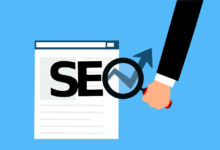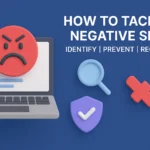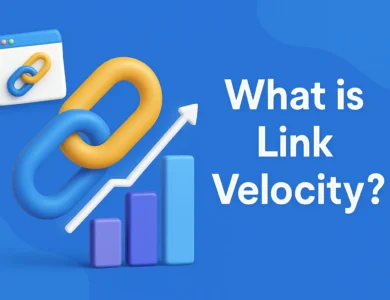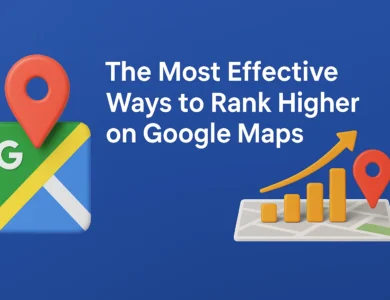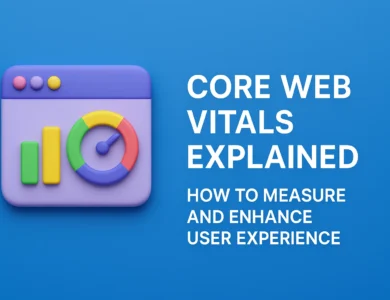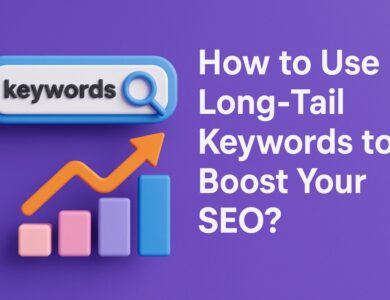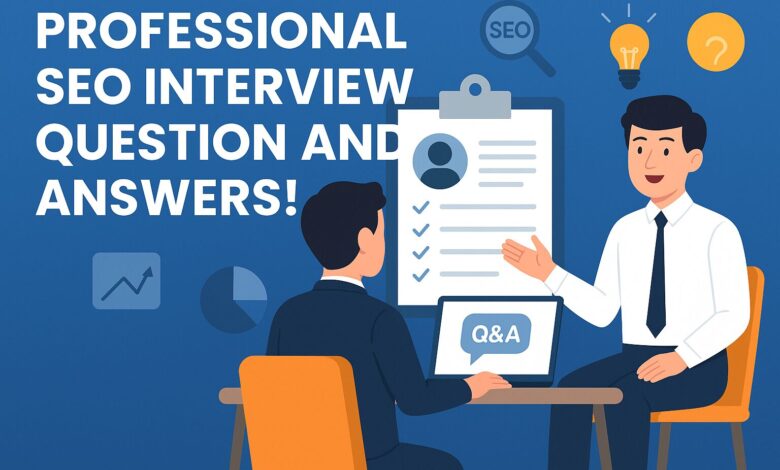
In today’s digital age, SEO (Search Engine Optimization) plays a crucial role in ensuring that websites are visible and accessible to users on search engines like Google, Bing, and Yahoo. If you’re preparing for an SEO interview, it’s important to familiarize yourself with common questions that may come up. Here’s a guide to help you prepare for your next SEO job interview with essential questions and expert answers.
100+ Top SEO Interview Questions and Answers!
Q.1. Tell me something about yourself.
Q. 2. What is SEO?
Q.3. Did you know what the types of SEO are?
- On-Page Optimization
- Off-Page Optimization
Q. 4. Which SEO techniques are popular?
Q.5. Who does SEO?
Q.6. What is On-Page Optimization?
Q.7. What is Off-Page Optimization?
Q.8. What tools do you use for doing SEO?
Q.9. What is Anchor Text?
Q.10. What is PR or Page Rank?
Q.11. What do you mean by backlinks?
Q.12. What do you mean by outbound links?
Q.13 What is Keyword & Keyword Phrase?
Q.14. What is Keyword Density?
Q.15. What is a Meta Title?
Q.16. What is the Meta Description?
Q.17. What is Googlebot?
Q.18. What are meta tags?
Q.19. What is Google Sandbox?
Q.20. What do you mean by organic results?
Q.21. What are the limitations of title and description tags in Google, Yahoo, Bing & Ask.com?
- Google.com: Title length should be 50- 60 characters & description length 150-160 characters.
- Yahoo.com: Title length should be 60-72charactersr & description length 155-165 characters.
- Bing.com: Title length should be 65 characters & description length of 155 characters.
- Ask.com: Title length should be 70 characters & description length of 312 characters.
Q.22. What are meta keywords?
Q.23. What is the difference between White Hat & Black Hat SEO?
- Low quality of duplicate content
- Getting the link from the non-thematic website to manipulate Page Rank
- Links from spam sites
- Links from adult content sites
- Keyword stuffing
- Cloaking
- Google Bowling, etc.
- Getting too many backlinks from a single page with different anchor text that targets a single page of your website.
Q.24. How will you increase the PageRank of a page?
Q.25. How will you treat Web standards while optimizing a website?
Q.26. What is a 301 redirect?
Q.27. What is Cloaking?
Q.28. What will you do to decrease the page loading time of a website?
Q.29. What is the robots.txt file?
Q.30. What is cross-linking?
Q.31. How will you resolve the canonicalization issue, or what is the .htaccess file?
Q.32. What will you do to maximize the frequency of crawling of your website by search engines?
Q.33. What is Pagination in SEO?
Q.34. How will you inform Google that a particular page contains Adult content?
<meta name=”rating” content=”adult” />OR<meta name=”rating” content=”RTA-5042-1996-1400-1577-RTA” />
Q.35. What are the op SEO ranking factors, according to you?
Q.36. How will you good click-through rate (CTR) in pay-per-click (PPC)?
- First, select the correct keyword.s
- Target your ads to the right audience
- Target your ads according to language.
- Make your budget before starting PPC
- Create different Ad Groups for different search phrases/keywords
- Keeanalyzingze your ads daily and change them if you are not getting sufficient results from them.
Q.37. Where do you put your robots.txt file?
Q.38. Your website is flagged as having malware, but you can’t find the malware. How will you resolve this issue, or what will you do?
Q.39. “Unreachable robots.txt” in Webmaster Tools crawl errors means?
Q.40. You want some of your keywords to be found on search engines, but these keywords are related to your content and can only be found in images on the page. How will you promote these keywords?
Q.41. All major search engines are case sensitive, Yes or No?
Q.42. Which of the following files is created to give instructions to SE bots?
Q.42. What is the difference between 301 redirect & 302 redirect?
Q.43. How will you find the number of backlinks of your competitor’s site?
Q.44. What is the difference between Spiders, Robots, and Crawlers?
Q.45. What is the difference between SEO and SEM?
Q.46. What is the method of content optimization?
Q.47. Do you types of Keywords?
Q.48. Did you know what the difference is between the targeted page & landing page?
Q.49. Which are the top 5 most important on-page factors according to you?
Q.50. What is a different method to control the robot?
Q.51. How will you optimize a website that is made on Flash, and what is your suggestion for your client?
Q.52. What do you understand by Frames in HTML?
Q.53. A client will allow you to take only tool either Google Analytics or Google Webmasters which one you choose?
Q.54. What is the Keyword Difficulty?
Q.55. Which is better, Robots.txt or Meta Robots Tag?
Q.56. If you have a site that is targeted at a particular country only, which of the following are recommended to do to rank well in country-specific search results?
Q.57. Do you know Matt Cutts, Sergey Brin & Larry Page?
Q.58. Do you use separate Seo strategies for Google, Yahoo, and Bing?
Q.59. What does the abbreviation PPC stand for?
Q.60. What is LSI?
Q.61. Will you use an ordinary HTML sitemap with Google?
Q.62. You have just launched a new website. Unfortunately, nobody visits it, even search engines’ spiders don’t notice it. What can you do for its SEO success?
Q.63. What is the difference between the exit rate and bounce rate?
Q.64. Can search engines see password-protected pages?
Q.65. From an SEO point of view, of SEO, which link is better, Text Link or Graphic Link?
Q.66. What are Google EMD updates?
Q.67. What is Bounce Rate?
Ans. Bounce rate is the percentage of visitors who leave a website after viewing only one page. A high bounce rate may indicate that users aren’t finding what they are looking for on your site.
Q.68. What is Link Building in SEO?
Ans. Link building is the process of acquiring hyperlinks from other websites to your own. These links are essential for improving search engine rankings and increasing site visibility.
Q.69. What is a Sitemap?
Ans. A sitemap is a file that lists all the pages of a website to inform search engines about the structure of the site’s content. It helps search engines crawl and index the pages more efficiently.
Q.70. What is Google Analytics?
Ans. Google Analytics is a web analytics service offered by Google that tracks and reports website traffic. It provides insights into user behavior, allowing you to optimize your site for better performance.
Q.71. What is Local SEO?
Ans. Local SEO is the practice of optimizing your website to rank higher in local search results. This is especially important for businesses with physical locations or those targeting a local audience.
Q.72. What is the difference between a 404 and a 301 error?
Ans. A 404 error means that the requested page was not found on the server. A 301 error is a permanent redirect that sends users from one URL to another.
Q.73. What is a Backlink Profile?
Ans. A backlink profile is the collection of all the backlinks pointing to a website. A strong backlink profile can significantly boost a site’s authority and ranking in search engine results.
Q.74. What is the purpose of alt tags in images?
Ans. Alt tags provide a text description of images for search engines and users who may not be able to view the images, improving both accessibility and SEO.
Q.75. What is CTR (Click-Through Rate)?
Ans. CTR is the percentage of users who click on a link compared to the total number of users who view the page, ad, or email. It is a key metric for measuring the success of an online campaign.
Q.76. What is the Google Hummingbird update?
Ans. The Hummingbird update, launched in 2013, improved the ability of Google’s search engine to understand the intent behind a query, focusing more on natural language processing and conversational search.
Q.77. What are Long-Tail Keywords?
Ans. Long-tail keywords are longer and more specific keyword phrases that typically have lower search volume but higher conversion rates because they are more targeted.
Q.78. What is Content Marketing?
Ans. Content marketing involves creating and sharing valuable, relevant content to attract and engage a target audience, ultimately driving profitable customer actions.
Q.79. What is a 502 Bad Gateway error?
Ans. A 502 Bad Gateway error occurs when a server acting as a gateway or proxy receives an invalid response from an upstream server. This can happen due to server misconfigurations or network issues.
Q.80. What is the Google Panda Update?
Ans. The Google Panda update, first launched in 2011, was designed to target low-quality content and penalize websites with thin or duplicated content, rewarding sites with high-quality, original material.
Q.81. What is Google Penguin Update?
Ans. The Google Penguin update, launched in 2012, was designed to target websites that engaged in manipulative link-building practices, such as keyword stuffing and using unnatural backlinks, to improve rankings.
Q.82. What is Mobile SEO?
Ans. Mobile SEO refers to the process of optimizing a website for mobile devices, ensuring that it is responsive, user-friendly, and easily navigable on smartphones and tablets.
Q.83. What is a 503 Service Unavailable error?
Ans. A 503 Service Unavailable error occurs when a web server is temporarily unable to handle a request, often due to server overload or scheduled maintenance.
Q.84. What is the difference between noindex and nofollow?
Ans. A “noindex” tag tells search engines not to index a page, while “nofollow” tells them not to follow links on that page. You can use these tags to control how search engines interact with specific content.
Q.85. What are Social Signals in SEO?
Ans. Social signals refer to social media activities such as likes, shares, and comments that may influence a website’s search rankings. While their direct impact is debated, social signals can increase visibility and traffic.
Q.86. What is the purpose of a 404 error page?
Ans. A 404 error page is shown when a user tries to access a page that does not exist. It helps guide users back to functional pages, improving user experience and reducing frustration.
Q.87. What is the significance of the Robots Meta Tag?
Ans. The Robots Meta Tag is used to control how search engines crawl and index a page, allowing webmasters to set directives like “noindex,” “nofollow,” or “noarchive” for specific pages.
Q.88. What is the difference between a blog and a website?
Ans. A website is a collection of web pages that typically serve a business or informational purpose, while a blog is a type of website that features regularly updated content, often in reverse chronological order.
Q.89. What are Google’s Core Web Vitals?
Ans. Google’s Core Web Vitals are a set of user experience metrics focusing on page loading performance, interactivity, and visual stability. They include Largest Contentful Paint (LCP), First Input Delay (FID), and Cumulative Layout Shift (CLS).
Q.90. What is Domain Authority?
Ans. Domain Authority (DA) is a metric developed by Moz to predict how likely a website is to rank on search engines. It is based on factors such as backlinks, domain age, and content quality.
Q.91. What is Link Juice?
Ans. Link juice refers to the value or authority passed from one webpage to another through links. Pages with high-quality backlinks tend to pass more link juice to pages they link to.
Q.92. What is the significance of SSL for SEO?
Ans. SSL (Secure Socket Layer) provides an encrypted connection between a website and its visitors, improving security. Google considers SSL a ranking factor, so websites with HTTPS tend to rank higher than those without it.
Q.93. What is an SEO Audit?
Ans. An SEO audit is a comprehensive analysis of a website to identify areas for improvement in its SEO performance. It includes assessing technical issues, on-page elements, content quality, and backlink profiles.
Q.94. What is Keyword Research in SEO?
Ans. Keyword research is the process of identifying the search terms and phrases that users are entering into search engines. It helps to guide content creation and optimization efforts to target relevant queries.
Q.95. What is the purpose of a Landing Page?
Ans. A landing page is a standalone web page created specifically for a marketing or advertising campaign. Its goal is to direct visitors toward a specific call to action, such as filling out a form or making a purchase.
Q.96. What are Rich Snippets?
Ans. Rich snippets are enhanced search results that include additional data like ratings, reviews, or event information, making the result stand out. They are generated by structured data markup such as schema.org.
Q.97. What is Structured Data?
Ans. Structured data is a standardized format for providing information about a page and its content. It helps search engines understand the context of the content, which can improve visibility in search results.
Q.98. What is a Content Delivery Network (CDN)?
Ans. A CDN is a network of servers distributed across different locations that deliver content (such as images, videos, or scripts) to users based on their geographic location. It helps improve website load times and performance.
Q.99. What is the difference between a Domain and a Subdomain?
Ans. A domain is the main address of a website, like “example.com.” A subdomain is a secondary domain that is part of the main domain, such as “blog.example.com.”
Q.100. What is a Negative SEO?
Ans. Negative SEO refers to unethical practices aimed at harming a competitor’s website rankings, such as creating low-quality backlinks or copying content to trigger penalties.
